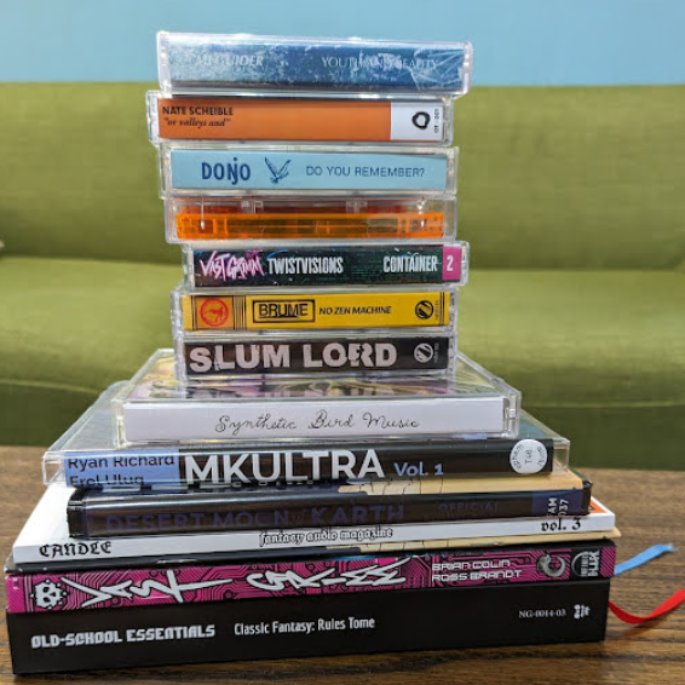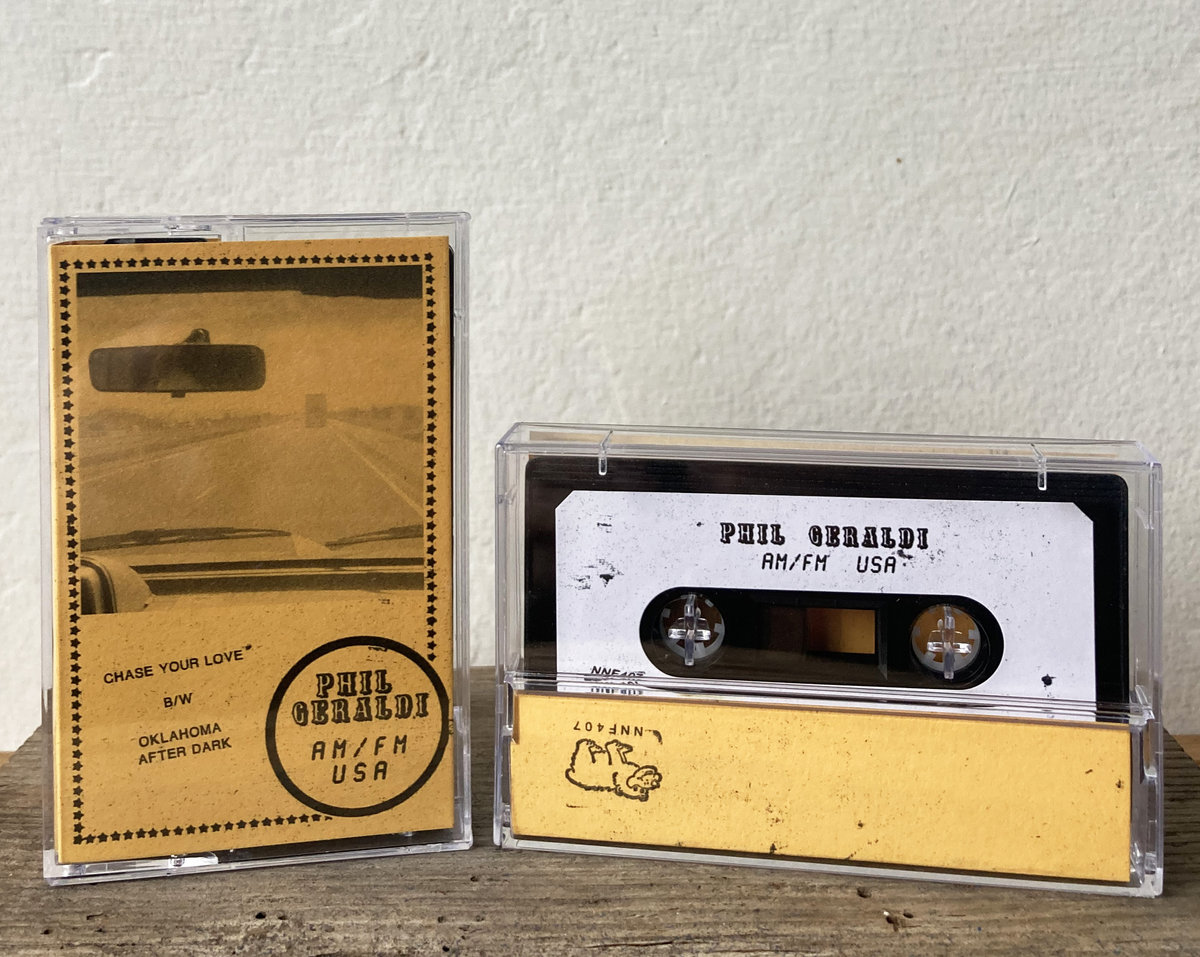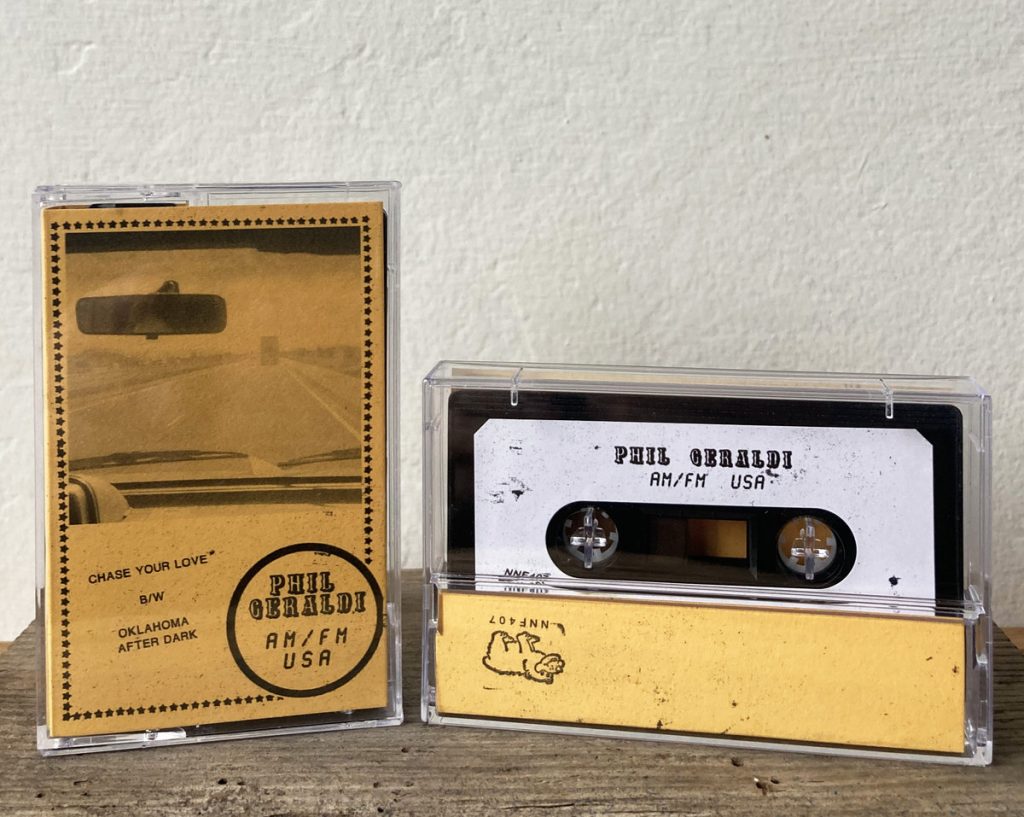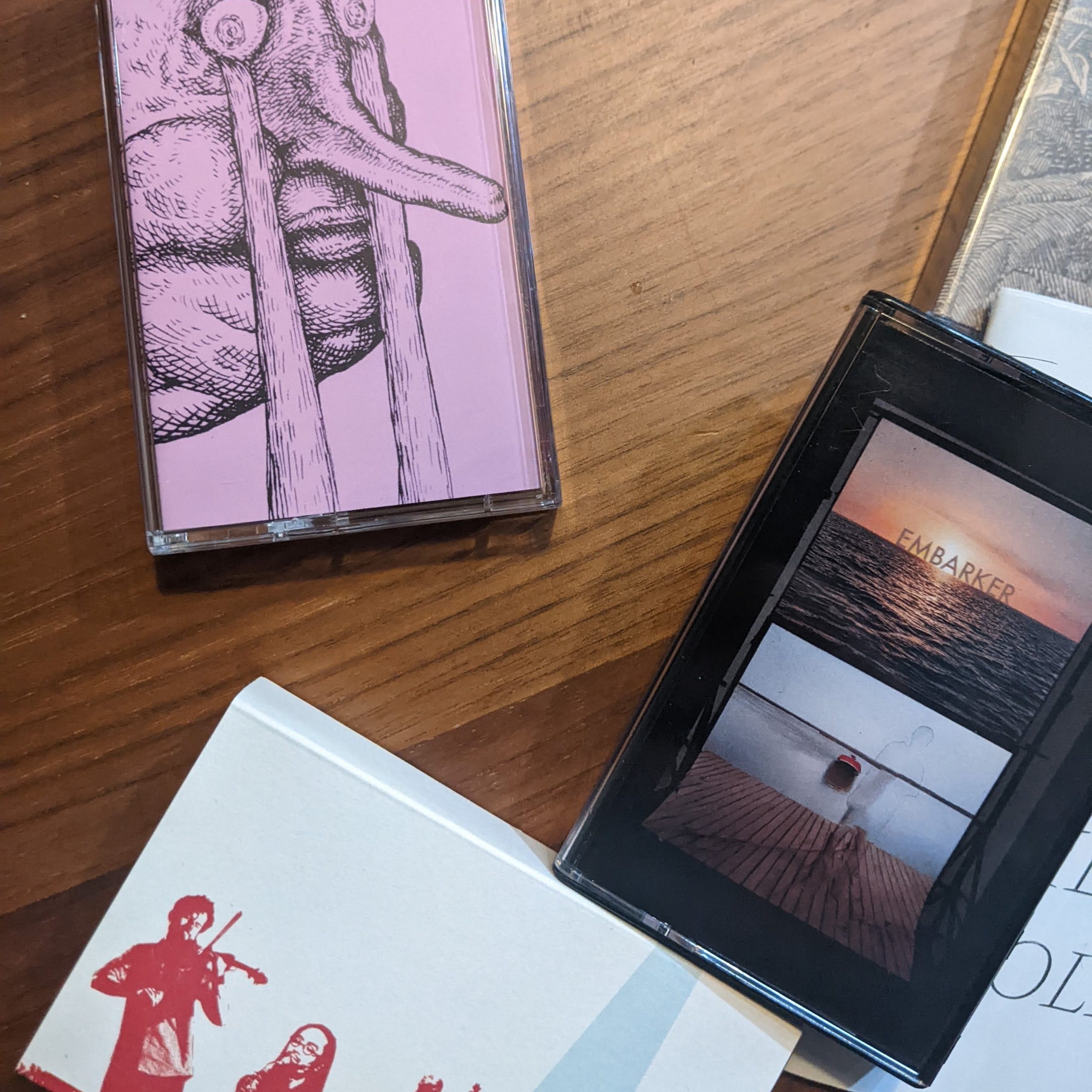Tabs Out | Episode 195
Episode 195
2.5.24

Ryan Richard & Erol Ulug – MKULTRA Volume 1 (Ephem Aural)
Nate Scheible – Or Valleys And (Outside Time)
Slum Lord – Rolling Brownout (No Rent)
Brume – No Zen Machine (No Rent)
Glitter in the Dark – Twistvisions Container 2 for Vast Grimm (Infinite Black)
Matthias Puech – Synthetic Bird Music compilation (Mappa)
When the Coyote Eats the Rat – Desert Moon of Karth OST (Fantasy Audio Magazine)
Deionarra – Candle 3 compilation (Fantasy Audio Magazine)
MJ Guider – Youth and Beauty (Modemain)
Donjo – Do You Remember (self released)

1.05.24 by Matty McPherson
Tabs Out | Phil Geraldi – AM/FM USA
Phil Geraldi – AM/FM USA
1.05.24 by Matty McPherson

The designed in France (made in China) We Are Rewind cassette player is the object Santa and his merry elves imagined I would need most in 2024. For the record, I used to use a Walkman WX-197, then swapped to an early 90s SX-F39. I quite fancy those late 80s/early 90s Sony models (especially sports) on account of the auto reverse, radio, and timer features. Terrific situational value, especially the radio on account of the static-laden presets you can find solace in.
I suppose though, that We Are Rewind believe that a 2020s portable cassette player should sacrifice those elements in lieu of one boxy-ass rectangle designed to elicit nostalgia with the charging battery potency of a 2012 iPod touch. The single side tape head is clean though, and it can record a mixtape (not that it has the microphone necessary for bootleg live performances). It would be a tremendous paperweight if not for its lone saving grace: connection to bluetooth headphones/speakers. Wow! Now I can listen to analog golden age classic Paid in Full on the shitty speaker Cox Communications sent my family to appease us for not cutting the chord! I will contend, it can be revelatory to take insular listening habits and move them towards bluetooth connection.
Such was the case on New Year’s Day, boozed up after a couple $5 pints and fiddling with the bluetooth, lamenting that lack of radio transmission. When suddenly, San Diego-based cadaver and “iterant journeyman” Phil Geraldi came through the speaker with a well-timed, well strung out answer to my wish; static and washed out pedal steel with the cadence of channel hopping on my dead walkman. AM/FM USA is one of the few tapes dropping from the ever-omnivorous Not Not Fun label’s 1/5/24 batch, and is an immediate standout, potentially even an epiphany. To call it a “cassette’s cassette” would be meaningless, but Geraldi is at one of the most intriguing crossroads of underground American sounds and tape fidelity I’ve genuinely heard writing about tapes for 42 odd months here. He’s made tapes for the format dating back to 2009, but this is really top shelf ferric.
AM/FM USA is a two-piece longform tape of “radio static, pedal steel, crickets, and great plains haze, the music moves between lost highway melancholia and truck stop concrète”. I was quite thrilled by that last term and what it seemed to imply, especially when the Wire took time with Geraldi for their Dec/Jan double issue to really go in the weeds about what makes someone come up with that lil’ turn of phrase. It’s rare that I hear about a San Diego (transplant) artist making sound quite like this. And Geraldi, a mixed-media artist, has been around in a storied capacity of his own way supplanting off of odd jobs, the open highway, and noise; sometimes all in the same mode that AM/FM USA takes to lucidly. There’s a consistent melody or rhythm, ever droning in and out of range. Both pieces slide, never not foregoing omnipresent feeling of right now, as a result of the wavy gliding tactic and serendipitous shifts.
An idea for this release seems to date back a decade plus or more back during his time as the cathode noise project Mystics in Bali, coordinating shows at the Arcata Mex N’ Wow. A 2014 interview, one of the rare communiques from the illusive Geraldi, discussed a project entitled “Radio America”. The project was visual as well, quite industrial and terror driven while “using only AM/FM radios as source instruments,” that Geraldi resonated with. He cited “the inherent right-now feeling which grounds it as moldable source material in an interesting way, and attaches to it an odd feeling of social comfort,” planning to “bend it [that distinct social comfort] into a meditative, minimized version of itself.” Geraldi website, filled with a decade’s worth of art videos, surveillance portraits, and other ephemera, is invoked through the way the AM / FM USA can suddenly tip into those bleak zones. It’s the truck stop concrète in action.
I’ve heard other radio tapes from folks like Bridgette Bardon’t & Lia Kohl, but none havever given me the immediacy that I had on my first listen; from fiddling with a bluetooth speaker as if it was a radio tuner, itself granting a parallel, if not uncanny feeling. Although, AM/FM USA is bolder and more encompassing in the feeling Geraldi harnesses from the static and dead air atmosphere, perhaps the most pervasive work I’ve seen giving tape-label americana music a proper link to Hank & Slim. Yes, there is quite a bit of pedal steel that absolutely aches. The whole thing has a cohesive, lo-fi veneer that repeatedly crests and yearns for the highway while also acknowledging exactly what it feels like. The space of suspense radio static, as much as the invocation of the truck stop/gas station can be, if only for a glimpse; a universal happening of USA highway culture. So much of the tape itself is washed out in that static it sounds like tires on asphalt, creating waves of endless terrain to lumber through until its pure heartland anywhere at any time at all; melancholia trying to fade away in the advert for this year’s truck model. Perpetually sepia toned, in peripheral blur. A trance odyssey for certain, in how it begs to ponder time not as an imagined past or a destination to get to, but that inherent right here, right now.
I suppose we could stop here, but I suppose this tape has me worked up because of excursion in music from last year. In the realm of “2023 advancements in identifying and codifying” music, ‘ambient americana’ became something of a vague buzzword and area of forensic analysis many folks I talk shop with online were attuned to. I was a bit surprised, mostly because like with ‘ambient jazz’ about two years prior, there had seemed to be a strange lack of immediate music forum/rym discussion regarding genre forefathers (Windham Hill & ECM) and current tape scene players (Full Spectrum, Astral Editions, Island House, Patient Sounds, Cached, Moon Glyph, amongst basically every German Army & Peter Kris release known to man, et al) have been dabbling in. I’ve asked folks about their feelings on this term and they both are at similar points: this is a long, ongoing conversation that they are just merely taking part of, and to codify what they (amongst any other artists really here) are doing as a scene mistakes the trees for the forest—especially when field recordings, haptics, and a personal imagining of a space (and the emotions you take from it) feel so much more tantamount to what this realm of music can come to champion.
And it’s extremely easy to as soon as you find yourself playing the umpteenth ambient pedal steel recording, to want to bludgeon yourself with the tape deck or speaker box. Codification and typecasting to that realm of these works doesn’t continue this conversation that’s been quite lively already over the past 4 decades; the one attuned to “sonic roadmapping” that anything from dub techno to flickered out Americana can tap into. Geraldi’s AM/FM USA is able to get there, often by not pushing pedal steel to the foreground, just letting the static become desire lines that spread out across the big sky voids lends. It feels like a real eureka for what sounds labeled somewhere between ambient X Americana could be striving for; melancholia trying to let go in the radio bump for this year’s truck model.
Edition of 50 Sold Out at Not Not Fun; Check Their Midhaven Distro or Discogs

1.2.24 by Tabs Out

